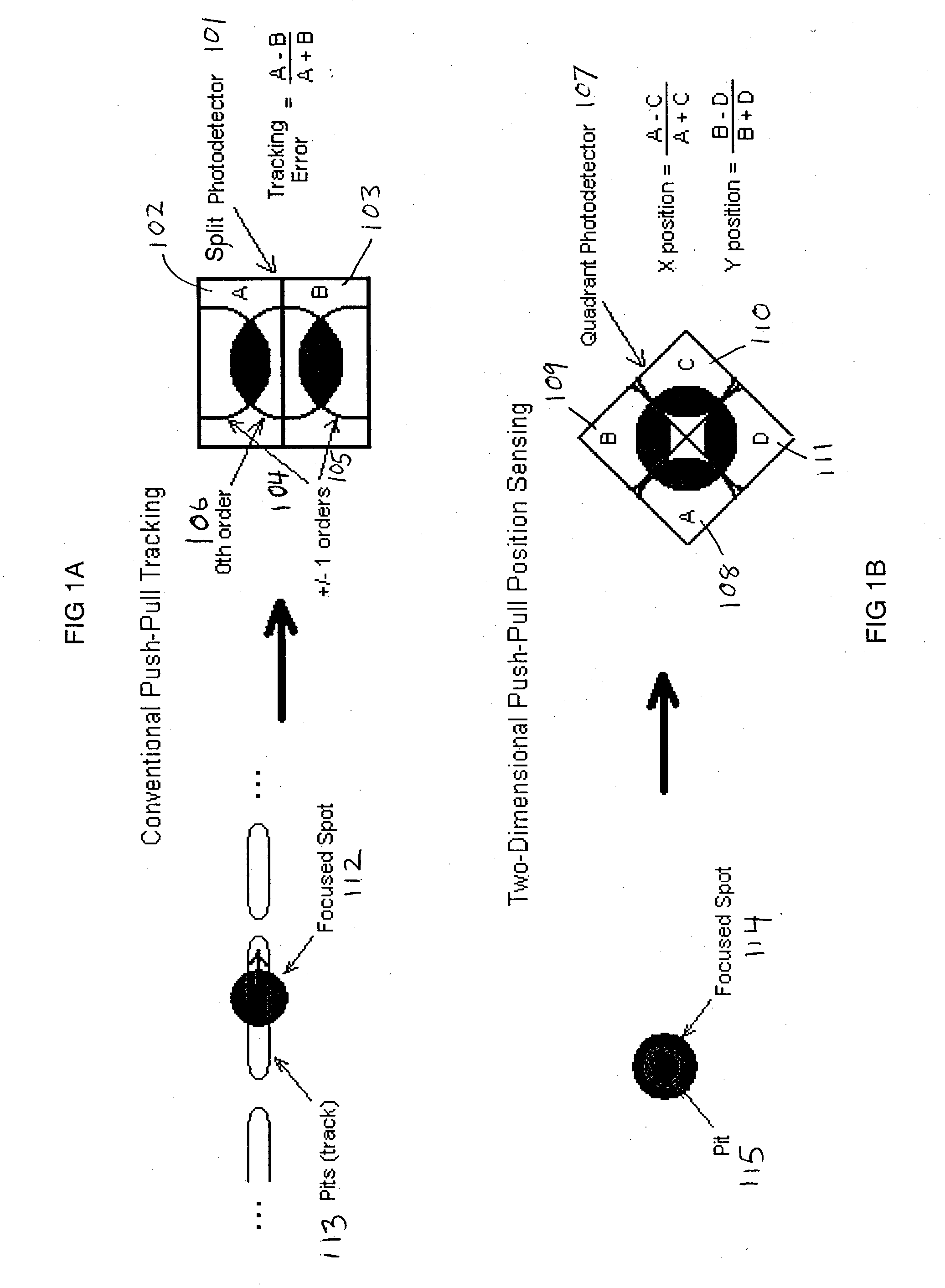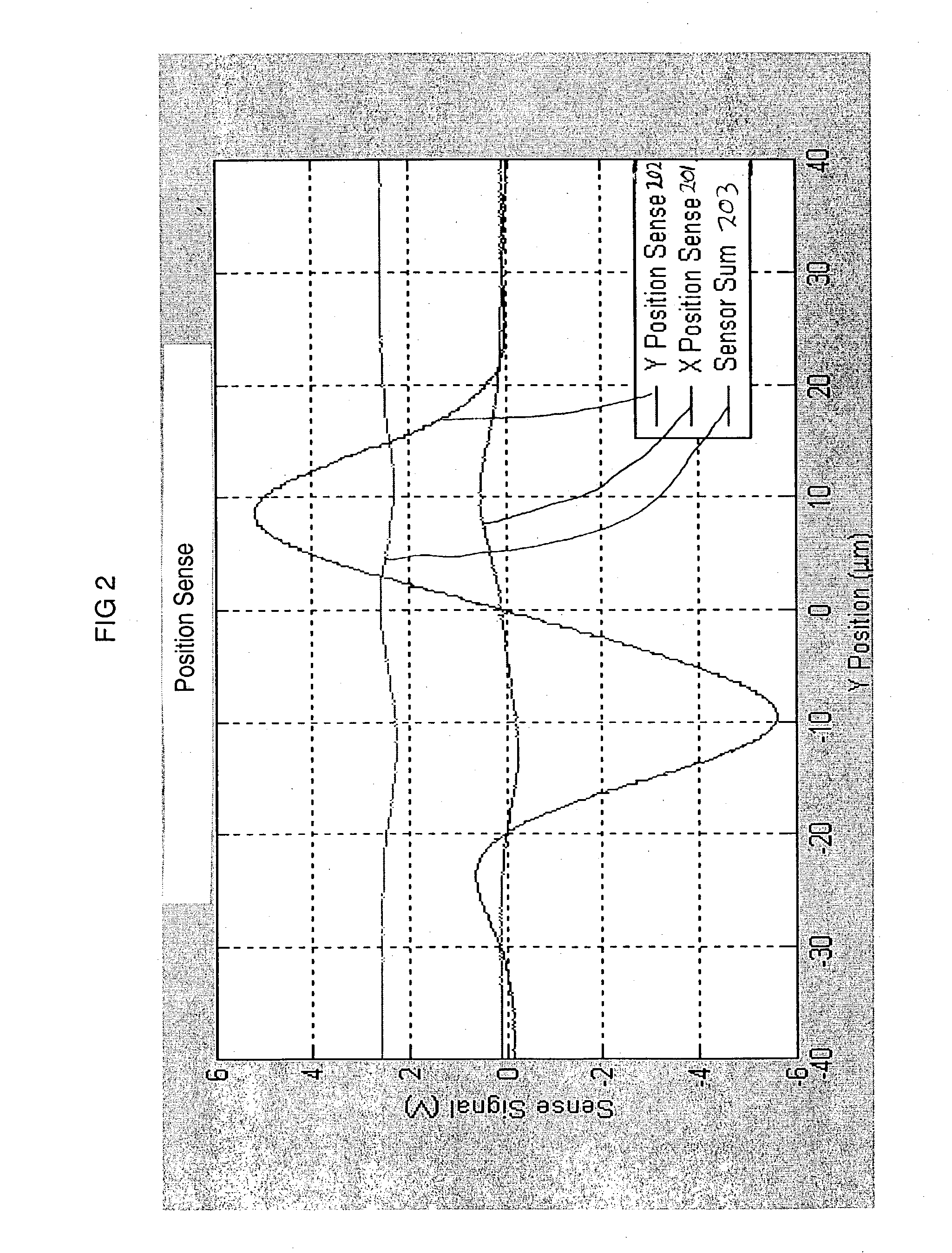Medium position sensing
a position sensing and medium technology, applied in the field of data storage, can solve problems such as limiting the range of focus and the field of view
- Summary
- Abstract
- Description
- Claims
- Application Information
AI Technical Summary
Benefits of technology
Problems solved by technology
Method used
Image
Examples
Embodiment Construction
[0036] 1. Two-Dimensional Push-Pull Position Sensing
[0037] FIG. 1A illustrates conventional one-dimensional push-pull position sensing. A focused spot 112 from a beam is shown in relation to a track 113 (or configuration of pits). A split photodetector 101 with two segments (A 102 and B 103) provides a tracking error that results from the offset of the 1.sup.st-order components 104, 105, with respect to the 0.sup.th-order component 106 at the split photodetector 101. The outputs of A and B are current-based measurements that reflect the light intensity at the detector segments.
[0038] FIG. 1B illustrates two-dimensional push-pull position sensing as used in certain embodiments of the present invention. Similarly as in FIG. 1A, a focused spot 114 from a beam is shown in relation to a single pit 115. A quadrant photodetector 107 with four segments (A 108, B 109, C 110, and D 111) provides an analogous two-dimensional tracking error that results from the offset of the 1.sup.st-order com...
PUM
| Property | Measurement | Unit |
|---|---|---|
| width | aaaaa | aaaaa |
| width | aaaaa | aaaaa |
| width | aaaaa | aaaaa |
Abstract
Description
Claims
Application Information
 Login to View More
Login to View More - R&D
- Intellectual Property
- Life Sciences
- Materials
- Tech Scout
- Unparalleled Data Quality
- Higher Quality Content
- 60% Fewer Hallucinations
Browse by: Latest US Patents, China's latest patents, Technical Efficacy Thesaurus, Application Domain, Technology Topic, Popular Technical Reports.
© 2025 PatSnap. All rights reserved.Legal|Privacy policy|Modern Slavery Act Transparency Statement|Sitemap|About US| Contact US: help@patsnap.com



